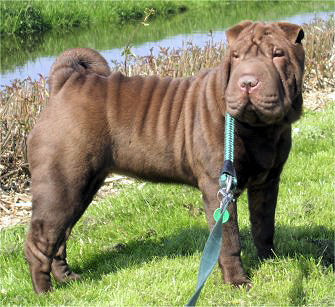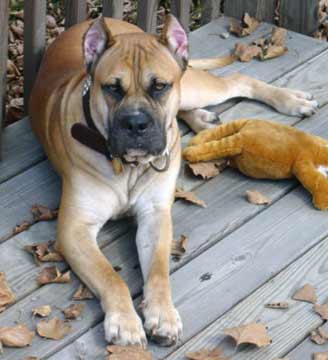The Chinese Shar-Pei was, at one time, one of the rarest dog breeds in the world. At this point in history, however, the breed is now thriving in numbers thanks to his unusual yet beautiful looks. This said, the Shar-Pei is not for everyone! This is a strong-willed, often dominant dog who will try to rule the household if not given adequate boundaries. Owners must be aware of this and be prepared to provide their dogs with continuous rules and obedience training.
Aggression is also not unheard of in this breed, particularly with other dogs but occasionally with people as well. Shar-Pei are known for having low tolerances for any sort of teasing or challenging. Even something as mundane as nail trimming may cause a Shar-Pei to feel threatened and “lash out”. Ear cleaning is another sore spot for many members of this breed. Early socialization and intensive exposure to life experiences (such as trimming nails and cleaning ears) are vital for puppies! If you do not have time to expose your young puppy to anything and everything you can think of for the first couple of months… do not get a Shar-Pei!
Incredibly independent, this breed is intelligent and often alert to changes in his environment. He takes it upon himself to check out strange sounds and new objects/people/animals in his territory. He doesn’t trust his owners to do so for him… he sees it as his job to investigate and evaluate. The Shar-Pei was bred for many tasks – guarding, hunting and fighting. All of these tasks mean that he had to be strong and courageous – almost without fear. When he is placed in a home with a meek owner, or on the flip side with an overbearing owner… things normally do not go well. He needs an owner that is firm yet fair, and who will enforce house rules yet understand the Shar-Pei’s unique temperament for what it is.
Although they are not particularly tall dogs, the Shar-Pei is a sturdy and muscular breed that has a lot of strength. It is recommended that an owner be at least as strong as the dog! This said, early obedience training goes a long way. A petite person with the right personality and dog-experience can easily handle a Shar-Pei if they understand obedience theories and regularly train their dog. Daily walks are essential, and this breed should never be confined completely to the house. As such, an owner must be able to handle their dog in order to get him out “into the world”. This is especially necessary if the Shar-Pei lives in an apartment setting. 
With the right owner, this breed can be an incredibly loyal and rewarding pet. They are very clean, calm and laid-back in the house. They hardly shed and require little grooming, provided you have done your homework and socialized your puppy to grooming procedures. They are one of the easiest breeds to housebreak. Suspicious of strangers, the Chinese Shar-Pei is actually a very gifted guard dog. You will likely always feel safe and protected if one of these wrinkled Chinese dogs shares your home. Many love children and will serve as protectors to them as well. While not overtly affectionate, nor do they see themselves as lap dogs, the breed does care deeply about their families.
Allergies, including food allergies, are unfortunately one of the many health issues that plague the breed. While some Shar-Pei are perfectly healthy, others need to be monitored by a veterinarian for one or more health problems. Eye issues and ear infections are two other common issues. Some members have excessive wrinkles on their faces which can somewhat hinder their eyesight. This is a factor in some aggression cases, as they have a harder time seeing people coming toward them and react accordingly. Clearly, more wrinkles do not always equal a better dog.
Some people swear that the Shar-Pei can be easily trained. Most often, the ease of training depends almost entirely on the training methods used. Many owners find that they have quite a difficult time training these dogs, particularly dealing with stubbornness and their extreme independent nature. It should be remembered that they think differently than many other breeds, and one must always keep one step ahead – mentally. A new owner may find their dog frustrating to train, or alternatively may conclude their dog is a “natural”, based on the personality of the dog and the skill of the owner/trainer.



